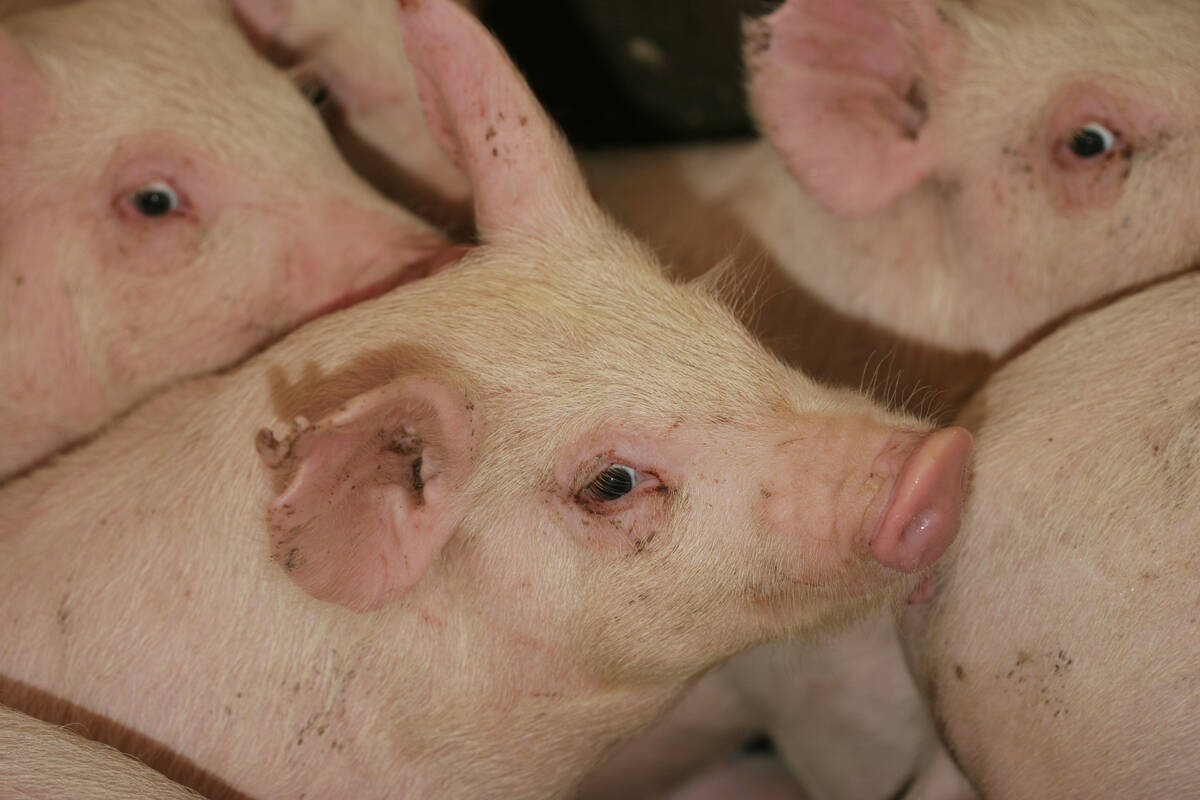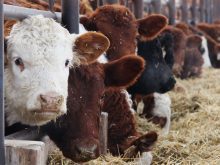There was no year-end cheer in the messages from market analysts talking to grain and livestock producers’ annual meetings.
The livestock sector on both sides of the border is reeling from the after shock of high grain markets in the last year, with bankruptcies and dispersals more common this year, said Richard Anderson, executive vice-president of Informa Economics.
He told the Alberta Barley Commission annual meeting in Banff last month that livestock prices were at their lowest levels in the last 25 years for U.S. cattle and hogs.
Read Also

The Western Producer Livestock Report – September 25, 2025
The U.S. national live price average for barrows and gilts was $81.21 Sept. 17. It was $78.37 Sept. 9. U.S. hogs averaged $106.71 on a carcass basis Sept. 17, up from $106.10 Sept. 9.
The Canadian situation is worse.
“2008 has not been a very pretty year,” he said.
“I am real nervous about the future of the meat industry.”
Coarse grain prices have fallen because the world produced more feed wheat, barley, oats and corn in 2008.
There is a particularly good supply of feed wheat that has eased the pressure on corn.
The demands on corn have also been eased by the U.S. ethanol industry’s problems.
The U.S. has the capacity to produce 13 to 14 billion gallons of ethanol annually, but economics have forced some plants to close and others are working below capacity, reducing the demand for corn.
More dried distillers grain, the ethanol byproduct, is finding its way into livestock rations alleviating some of the demand for straight corn.
“We are building ourselves into a situation where the supply capacity has gotten in front of the demand,” Anderson said.
Chicken markets in the U.S. are also under stress. Most of the time poultry manages to profit, but poor margins in broilers weakened their demand for feed this past year.
Cow-calf herds continue to shrink and the feedlot sector is under economic stress.
“The hog industry is in contraction and is losing buckets of money,” he said.
None of the commodities operates in its own arena any more.
The price of crude oil and corn is linked, so if the price of a barrel of oil risies, grain prices climb.
“I can flat guarantee if we go back to $100 crude, we’ll be back to $5 corn,” Anderson said.
Economic changes occur in days and weeks rather than years, and demand for all commodities is weak.
“We have 180 degree difference from what we were looking at a year ago,” he said.
U.S. cotton plantings will likely drop because it is a money-losing crop. Soybeans or corn may replace it, increasing those crops by one to two percent over last year.
“No one in their right mind should be growing cotton right now,” Anderson said.
Demand for barley and oats in Canada is holding its own for now but is not likely to increase because livestock populations are shrinking.
Rob Leslie, senior analyst with Canfax, also told a story of shrinking herds across the country.
The Canadian cow herd has been liquidating since 2004. In the latest census numbers released in July, there were 4.6 million beef cows with the majority being in Alberta at two million and Saskatchewan at 1.4 million.
“Every province has seen a decline and some regions were hit harder than others,” he told the Alberta Beef Producers annual meeting last month.
Leslie expects 2009 to continue the liquidation trend and by next July, the cow herd should be about 4.2 million.
The downward trend is most obvious in the number of heifers being retained for breeding stock.
About 80 percent are going for slaughter, which is well above the average of 65 percent.
The cow herd is also being culled at a 14 percent rate compared to the average of 10 percent.
About 900,000 cows and bulls were expected to be killed by the end of 2008, the highest cull rate since 2001.
The U.S. beef herd is in the same situation.
As for exports of live animals to the U.S., that, too, is dropping.
For the first half of 2008, feeder exports were setting a record pace. When mandatory U.S. country-of-origin labelling went into effect, American feedlot owners got nervous about the costs associated with the labelling rule and slowed imports.
Leslie anticipated 500,000 feeders would be exported by the end of 2008. More stayed home and November feedlot placements were higher than the year before.
In October, there were 788,362 cattle on feed in Alberta and Saskatchewan lots, but by November, there were 943,789.
Fed cattle exports are also down. In 2007, 820,000 left the country. For 2008, the numbers are likely to settle around 720,000 head.















